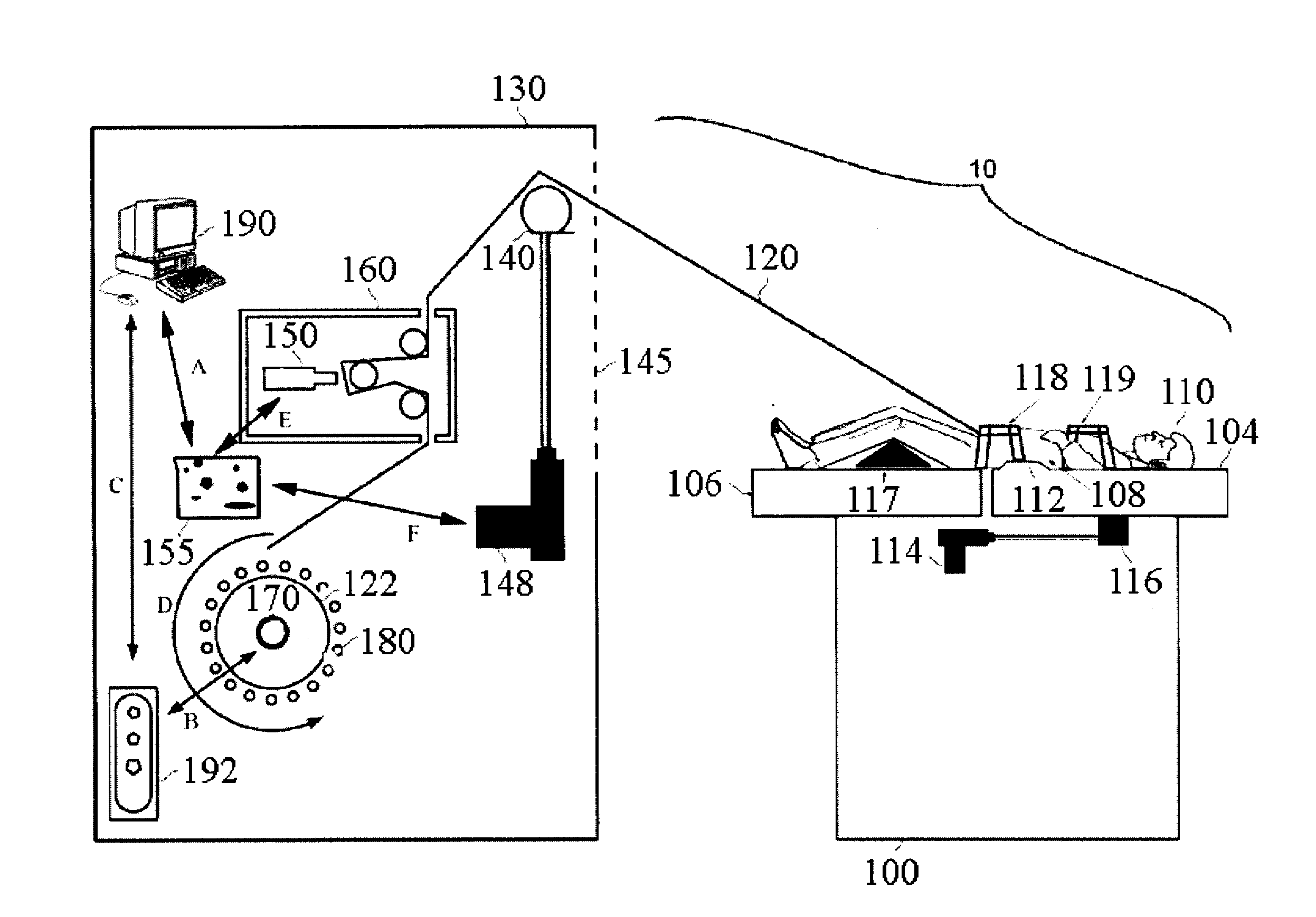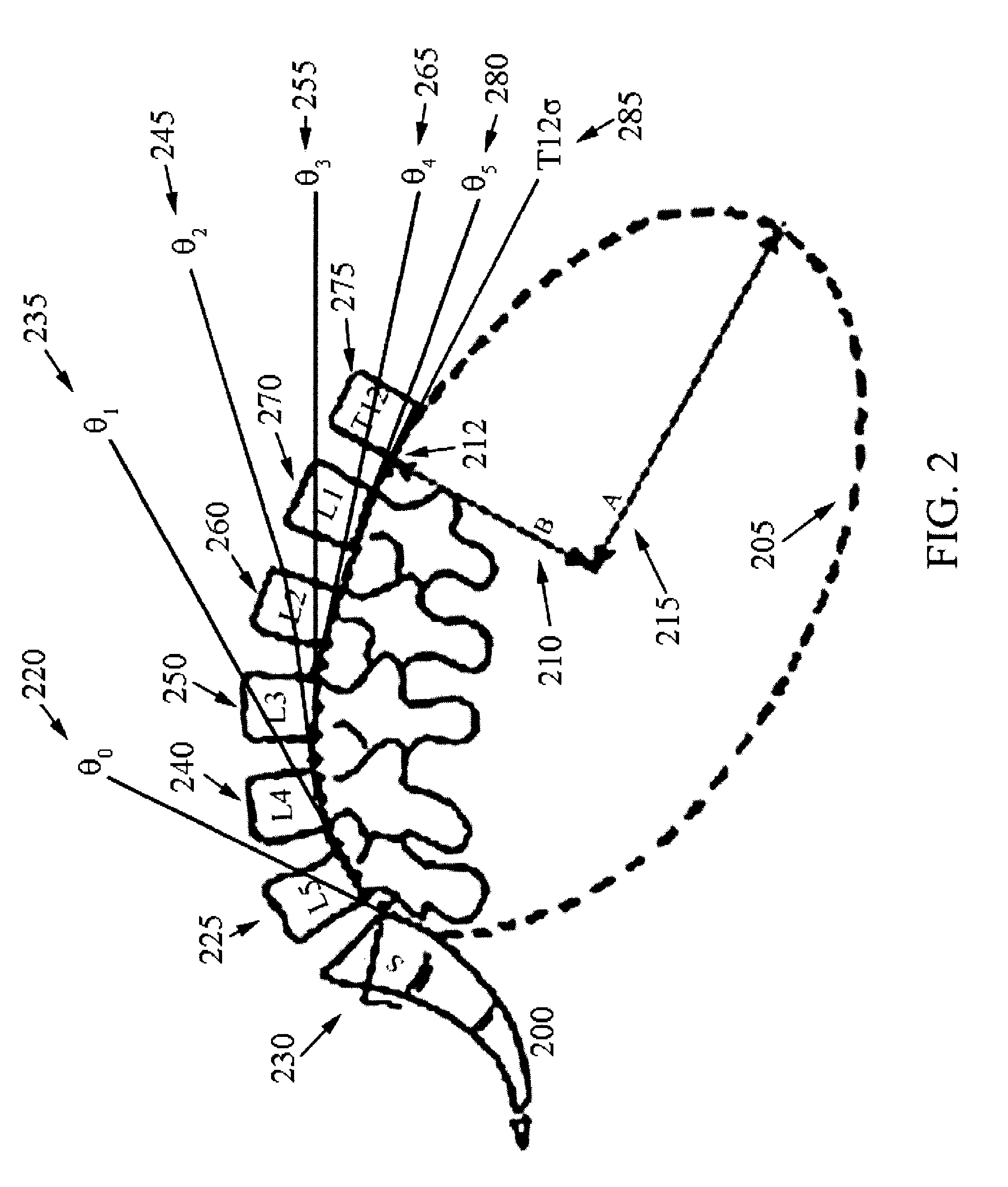System for dynamically adjusting treatment angle under tension to accommodate variations in spinal morphology
a treatment angle and dynamic adjustment technology, applied in physical therapy, medical science, chiropractic devices, etc., can solve the problems of increasing the risk of patients and providers not being able to communicate with patients and providers, affecting the effectiveness of spinal traction or spinal decompression therapy, and reducing the effect of patient reactions
- Summary
- Abstract
- Description
- Claims
- Application Information
AI Technical Summary
Benefits of technology
Problems solved by technology
Method used
Image
Examples
Embodiment Construction
[0044]FIG. 1 illustrates a spinal therapy system 10 used to treat a patient 110 formed according to an embodiment of the present invention. The system 10 includes a microprocessor, control system, or computing device 190 having firmware and / or software that operates to utilize and control an actuator 170. The computing device 190 is configured to interface with a user, such as by use of a monitor and keyboard setup. By way of example only, the actuator 170 may be electronically, hydraulically, pneumatically, or mechanically operated. The actuator 170 is connected to a patient 110 via a patient interface device 120. By way of example, the actuator 170 may be operated through a system of gears or pulleys such that the tensile forces applied to the patient 110 by the patient interface device 120 are carefully controlled. This system 10 is used to perform decompression therapy on the patient 110 by applying cycles of tensile forces from the actuator 170 on the spine 108 of the patient 1...
PUM
 Login to View More
Login to View More Abstract
Description
Claims
Application Information
 Login to View More
Login to View More - R&D
- Intellectual Property
- Life Sciences
- Materials
- Tech Scout
- Unparalleled Data Quality
- Higher Quality Content
- 60% Fewer Hallucinations
Browse by: Latest US Patents, China's latest patents, Technical Efficacy Thesaurus, Application Domain, Technology Topic, Popular Technical Reports.
© 2025 PatSnap. All rights reserved.Legal|Privacy policy|Modern Slavery Act Transparency Statement|Sitemap|About US| Contact US: help@patsnap.com



